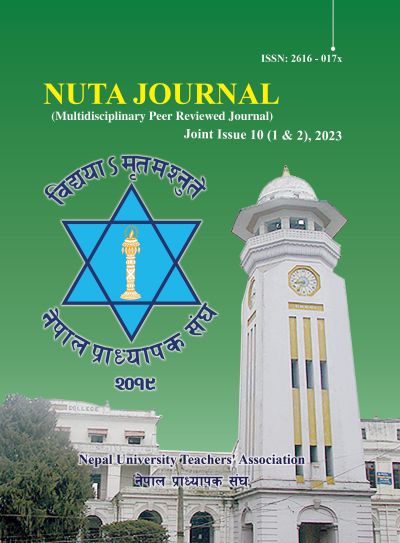Measurement of Value Added Tax (VAT) Efficiency of Nepal
DOI:
https://doi.org/10.3126/nutaj.v10i1-2.63049Keywords:
VAT, GDP, economic growth, VAT efficiency, VAT efficiency rationAbstract
VAT is indirect tax, becoming major sources of Government revenue worldwide. VAT is paid in an effort to uplift the tax collection efficiency in order to recover their budget deficit and enhance the economic stability. But the efficiency of VAT collection has played negative roles like standard VAT rate, threshold, list of tax exempted or zero rate goods and services, tax evasion, political commitment, stable government etc. This research has taken secondary data from Government’s authentic publication from 2010/011 to 2020/021. All these data were analyzed on the helps of trend analysis, VAT to GDP ratio, VAT efficiency ratio and C-efficiency ratio. All the indicators have been found positive. The collection of VAT and GDP appear in increasing trend. The increasing trend of VAT is higher than GDP. The VAT to GDP ratio reaches from 3.95 to 11.84, VAT efficiency ratio extends from 30.38 to 91.12 and average C-efficiency ratio of the study period 64.7. The studied indicators proved that VAT has improving collection efficiency, increasing trend of collection and improving in role on GDP on Nepalese economy. From all these, VAT should be more income generative in the future and help to minimize the budget deficiency of Nepal Government.
Downloads
Downloads
Published
How to Cite
Issue
Section
License
© Copyright by NUTA JOURNAL
All Rights Reserved. No part of this Journal may be reproduced in any form or by any electronic or mechanical means, including information storage and retrieval system without prior permission in writing from the publisher, except by a reviewer who may quote brief extracts while reviewing.

